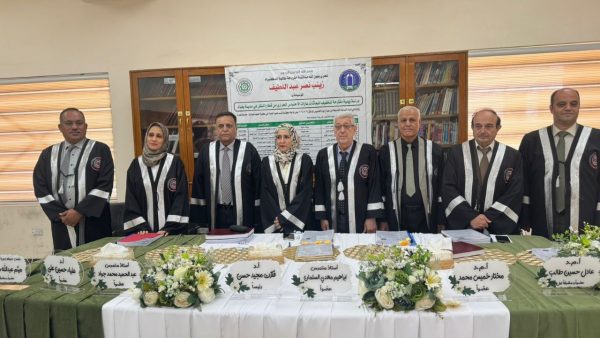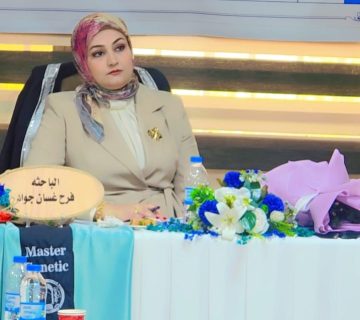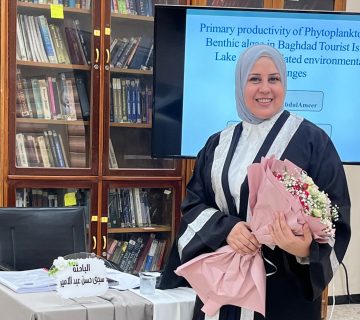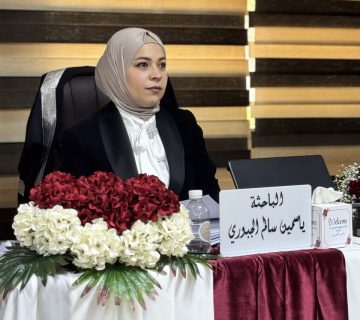Dissertation Discussion
The College of Science for Women / University of Baghdad examined the dissertation entitled (Impact of Transportation Sector on Air Pollution and Greenhouses Gases Emissions Within Baghdad City-Iraq) of the student (Zainab Nassr Abdulateef), in Partial Fulfilment of the Requirements for the Degree of Doctor in Biology / Ecology.
The dissertation was conducted to to evaluate the air quality of Baghdad traffic intersections and measuring the concentrations of greenhouse gases and some gaseous pollutants resulting from transportation exhausts.
The study includes conducting a research study on assessing air quality and analyzing the temporal and spatial distribution of greenhouse gases and some gaseous pollutants resulting from vehicle exhausts on both sides of Al-Karkh and Al-Rusafa during morning and afternoon peak times, in addition to estimating the amount of greenhouse gas emissions using the Intergovernmental Panel on Climate Change (IPCC) methodology.
The study concluded that 2023 witnessed the highest total greenhouse gas emissions from the transportation sector in Baghdad compared to the past seven years, at 15,196.90 Gg. CO₂ emissions for 2023 were estimated at 14,875 g/L, representing a 203% increase. Concentrations of greenhouse gases such as methane, carbon dioxide, and nitrous oxide recorded higher levels during the dry season compared to the wet season. Concentrations of other gaseous pollutants such as SO₂, O₃, and NOx also increased in all seasons, especially during the afternoon in the dry season. The air quality index increased to “hazardous” levels in many study sites during the dry season, particularly for O₃ and SO₂, with more than 70% of the measurement sites recording “very unhealthy” and “hazardous” concentrations for O₃ and SO₂. Concentrations of gases such as SO₂, O₃, and NOx exceeded national and international permissible limits and were higher than at the control site. The study revealed that the high concentrations were associated with traffic congestion, especially near educational institutions. Educational areas and shopping centers were hotspots, particularly at Al-Rusafa intersections, due to high population density, frequent traffic, and the use of various means of transportation, sometimes dilapidated. In addition to the impact of industrial facilities such as the power plant and the Dora refinery near Al-Jadriya and Al-Bayaa sites, as well as the effect of climatic factors such as temperatures and relative humidity. The study results indicated that increased population growth and improved living standards significantly increased demand for vehicles, leading to an increase in fuel consumption, both regular gasoline and diesel. Also, fuel type, idle time, vehicle type and maintenance, and weather conditions had a direct impact, leading to an increase in environmentally harmful emissions.
Excellent










